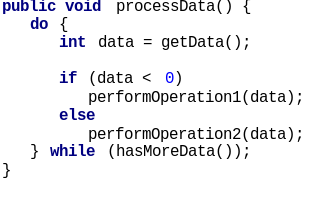External links
| This programming-language-related article is a stub. You can help Wikipedia by expanding it. |
In computer programming languages, TypeParameter is a generic label used in generic programming to reference an unknown data type, data structure, or class. TypeParameter is most frequently used in C++ templates and Java generic . TypeParameter is similar to a metasyntactic variable (e.g., foo and bar), but distinct. It is not the name of a generic type variable, but the name of a generic type of variable.
The capitalisation varies according to programming language and programmer preference. TypeParameter, Typeparameter, TYPEPARAMETER, typeparameter, and type_parameter are all possible. Alternate labels are also used, especially in complex templates where more than one type parameter is necessary. X, Y, Foo, Bar, Item, Thing are typical alternate labels. Many programming languages are case-sensitive, making a consistent choice of labels important. The CamelCase TypeParameter is one of the most commonly used.
| This programming-language-related article is a stub. You can help Wikipedia by expanding it. |
The terms foobar, or foo and others are used as metasyntactic variables and placeholder names in computer programming or computer-related documentation. They have been used to name entities such as variables, functions, and commands whose exact identity is unimportant and serve only to demonstrate a concept.
A metasyntactic variable is a specific word or set of words identified as a placeholder in computer science and specifically computer programming. These words are commonly found in source code and are intended to be modified or substituted before real-world usage. The words foo and bar are good examples as they are used in over 330 Internet Engineering Task Force Requests for Comments, the documents which define foundational internet technologies like HTTP (websites), TCP/IP, and email protocols.
In programming languages, a closure, also lexical closure or function closure, is a technique for implementing lexically scoped name binding in a language with first-class functions. Operationally, a closure is a record storing a function together with an environment. The environment is a mapping associating each free variable of the function with the value or reference to which the name was bound when the closure was created. Unlike a plain function, a closure allows the function to access those captured variables through the closure's copies of their values or references, even when the function is invoked outside their scope.
Generic programming is a style of computer programming in which algorithms are written in terms of types to-be-specified-later that are then instantiated when needed for specific types provided as parameters. This approach, pioneered by the ML programming language in 1973, permits writing common functions or types that differ only in the set of types on which they operate when used, thus reducing duplication. Such software entities are known as generics in Python, Ada, C#, Delphi, Eiffel, F#, Java, Nim, Rust, Swift, TypeScript and Visual Basic .NET. They are known as parametric polymorphism in ML, Scala, Julia, and Haskell ; templates in C++ and D; and parameterized types in the influential 1994 book Design Patterns.
In computer programming, a parameter or a formal argument, is a special kind of variable, used in a subroutine to refer to one of the pieces of data provided as input to the subroutine. These pieces of data are the values of the arguments with which the subroutine is going to be called/invoked. An ordered list of parameters is usually included in the definition of a subroutine, so that, each time the subroutine is called, its arguments for that call are evaluated, and the resulting values can be assigned to the corresponding parameters.

In computer science, conditional statements, conditional expressions and conditional constructs are features of a programming language, which perform different computations or actions depending on whether a programmer-specified boolean condition evaluates to true or false. Apart from the case of branch predication, this is always achieved by selectively altering the control flow based on some condition.
In computer science, a symbol table is a data structure used by a language translator such as a compiler or interpreter, where each identifier in a program's source code is associated with information relating to its declaration or appearance in the source. In other words, the entries of a symbol table store the information related to the entry's corresponding symbol.
DIGITAL Command Language (DCL) is the standard command language adopted by most of the operating systems (OSs) that were sold by the former Digital Equipment Corporation. DCL had its roots in the IAS, TOPS-20, and RT-11 OSs and was implemented as a standard across most of Digital's OSs, notably RSX-11, but took its most powerful form in the OpenVMS OS.
Intelligent code completion is a context-aware code completion feature in some programming environments that speeds up the process of coding applications by reducing typos and other common mistakes. Attempts to do this are usually done through auto completion popups when typing, querying parameters of functions, query hints related to syntax errors, etc. Intelligent code completion and related tools serve as documentation and disambiguation for variable names, functions and methods using reflection.

The syntax of Java refers to the set of rules defining how a Java program is written and interpreted.
In mathematics and in computer programming, a variadic function is a function of indefinite arity, i.e., one which accepts a variable number of arguments. Support for variadic functions differs widely among programming languages.
In the C, C++, D, JavaScript and Julia programming languages, const is a type qualifier: a keyword applied to a data type that indicates that the data is read only. While this can be used to declare constants, const in the C family of languages differs from similar constructs in other languages in being part of the type, and thus has complicated behavior when combined with pointers, references, composite data types, and type-checking.
In computer programming, a temporary variable is a variable with short lifetime, usually to hold data that will soon be discarded, or before it can be placed at a more permanent memory location. Because it is short-lived, it is usually declared as a local variable, i.e., a variable with local scope. There is no formal definition of what makes a variable temporary, but it is an often-used term in programming.
this, self, and Me are keywords used in some computer programming languages to refer to the object, class, or other entity of which the currently running code is a part. The entity referred to by these keywords thus depends on the execution context. Different programming languages use these keywords in slightly different ways. In languages where a keyword like "this" is mandatory, the keyword is the only way to access data and methods stored in the current object. Where optional, they can disambiguate variables and functions with the same name.

Haxe is an open source high-level cross-platform programming language and compiler that can produce applications and source code, for many different computing platforms from one code-base. It is free and open-source software, released under the MIT License. The compiler, written in OCaml, is released under the GNU General Public License (GPL) version 2.
This article describes the syntax of the C# programming language. The features described are compatible with .NET Framework and Mono.
A batch file is a script file in DOS, OS/2 and Microsoft Windows. It consists of a series of commands to be executed by the command-line interpreter, stored in a plain text file. A batch file may contain any command the interpreter accepts interactively and use constructs that enable conditional branching and looping within the batch file, such as IF, FOR, and GOTO labels. The term "batch" is from batch processing, meaning "non-interactive execution", though a batch file may not process a batch of multiple data.
In computer programming, a constant is a value that cannot be altered by the program during normal execution, i.e., the value is constant. When associated with an identifier, a constant is said to be "named," although the terms "constant" and "named constant" are often used interchangeably. This is contrasted with a variable, which is an identifier with a value that can be changed during normal execution, i.e., the value is variable. Constants are useful for both programmers and compilers: For programmers they are a form of self-documenting code and allow reasoning about correctness, while for compilers they allow compile-time and run-time checks that verify that constancy assumptions are not violated, and allow or simplify some compiler optimizations.
In the C++ programming language, decltype is a keyword used to query the type of an expression. Introduced in C++11, its primary intended use is in generic programming, where it is often difficult, or even impossible, to express types that depend on template parameters.
"typename" is a keyword in the C++ programming language used when writing templates. It is used for specifying that a dependent name in a template definition or declaration is a type. In the original C++ compilers before the first ISO standard was completed, the typename keyword was not part of the C++ language and Bjarne Stroustrup used the class keyword for template arguments instead. While typename is now the preferred keyword, older source code may still use the class keyword instead.